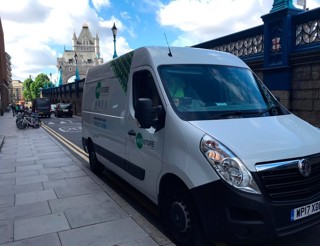The fall in the value of the pound against the dollar, against a backdrop of volatility in world oil prices means now is a good time for fleets to review pricing options in the fuel market, says Fleet Logistics UK and Ireland.
New data from the RAC shows that both diesel and petrol prices increased during July as the pound lost 3% on the dollar.
Because fuel spend can be greatly affected by market volatility, fleets need to ensure that strategic decisions “made today would be the right choice for the future of their business from a cost, driver and environmental perspective”.
Sue Branston, country head of Fleet Logistics UK and Ireland, said: “We are in a volatile marketplace with global unrest and Brexit both impacting on the fleet supply chain. That’s why now is a crucial time to review options in the fuel market and control pricing in order to manage total cost of ownership.
“For any business, the diverse range of challenges involved in operating a fleet is often unique to that business, and this diversity extends to fuel policy and purchasing methods. As it’s the second biggest cost for fleets, reviewing expenditure on a regular basis, with the help of specialists to leverage knowledge within this area, is key to controlling fuel spend,” she said.
Fleet Logistics had found businesses often did not know the true cost of their fuel tariffs and many still paid pump prices, said Branston.
“Retail margins have been higher than normal this year and commodity price impacting more than currency fluctuations. Protecting the true price per litre paid, in addition to maximising consumption through improved driver behaviour, considering journey necessity, car sharing and route planning, is key in controlling fleet spend.
“There have been some nasty surprises for certain fleet operators when results of the analysis of the last 6-12 months of fuel spend have been presented to them and we compared actual costs against the best available in the marketplace and highlighted potential savings.
“One client we recently reviewed had thought they were on a good fuel tariff, but we were able to demonstrate achievable savings of £120,000 in year one. We are currently reporting on delivered savings which are actually 6% ahead of this initial forecast.”
Branston says that key to making fuel savings was understanding the pricing mechanisms and options available in the marketplace, especially those that were not well known, and working with an expert partner.
Help control your fuel costs with our fuel price comparison tool






















Login to comment
Comments
No comments have been made yet.